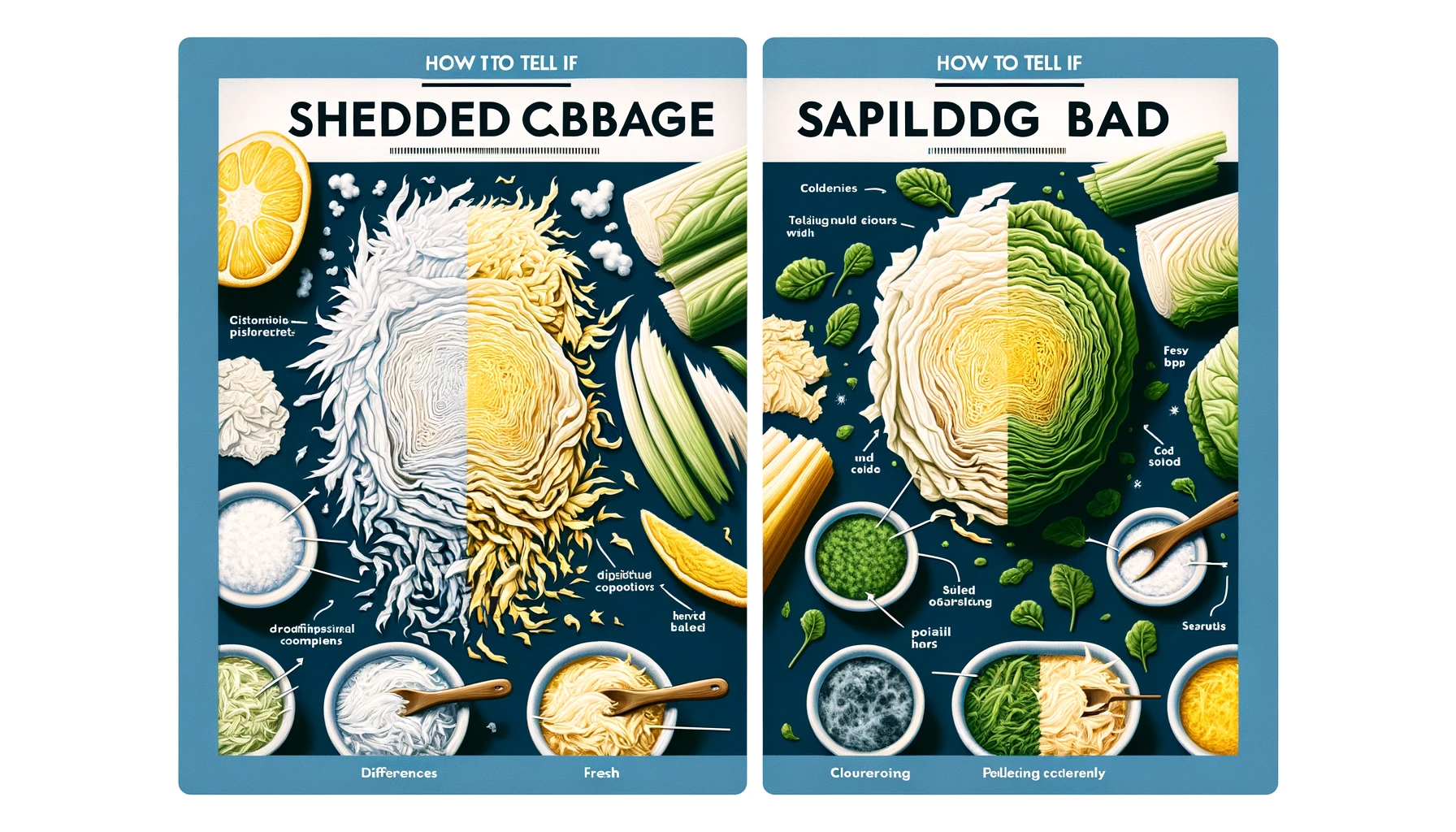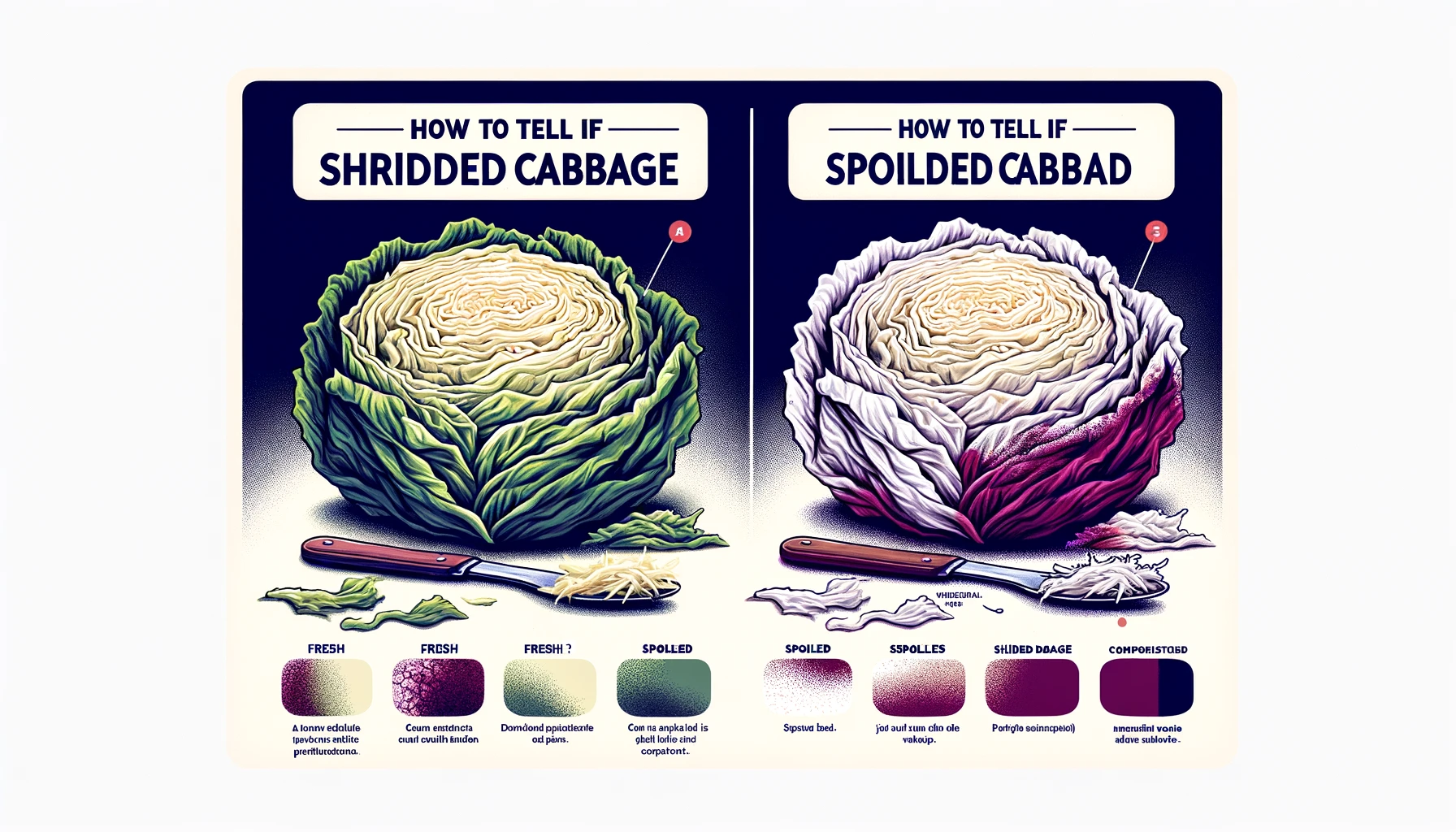Shredded cabbage is bad if it smells foul or has slimy texture. Discolorations or mold are also indicators of spoilage.
Determining the freshness of shredded cabbage is essential for both taste and health. Fresh cabbage should have a crisp texture and a clean, earthy smell, making these sensory cues vital for quality assessment. Knowing when to discard spoiled cabbage helps prevent food-borne illnesses and ensures your dishes maintain their intended flavor profile.
This concise guide aims to assist you in making informed decisions about your cabbage, so you can enjoy your meals without worry. Storing cabbage properly and keeping an eye on its condition are key to extending its shelf life and minimizing waste. Whether you’re a home cook or a food enthusiast, understanding the signs of bad cabbage is a simple yet crucial aspect of kitchen savvy.
About Cabbage Freshness
Cabbage, a cruciferous vegetable, has long been cherished for its versatility and health benefits. However, the key to enjoying its full potential lies in its freshness. Discerning whether shredded cabbage is past its prime is essential to ensure the flavors and nutritional benefits remain intact. In this guide, we’ll discuss how to determine the shelf life of cabbage and examine its common uses in culinary creations.
Understanding the Shelf Life of Cabbage
Shredded cabbage, when handled and stored properly, can retain its quality for a considerable period. Shelf life varies depending on several factors such as storage conditions, whether it’s cooked or raw, and if it has been mixed with dressing or other ingredients. Uncovering the expected freshness duration will lead to better management of your cabbage supplies and avoidance of unnecessary waste.
Common Uses for Shredded Cabbage in the Kitchen
Shredded cabbage holds a prominent place in the heart of many kitchens due to its distinct texture and flavor. It can transform a simple dish into something spectacular with its crunchy yet tender bite. From salads and slaws to sautés and stir-fries, shredded cabbage is a versatile ingredient that can be incorporated into a myriad of recipes. Recognizing its applications can inspire creative and delicious meals while encouraging its optimal use before it turns bad.
Visual Indicators of Spoilage
Determining when shredded cabbage has gone bad is crucial to prevent foodborne illness, and fortunately, there are clear visual indicators that can help you decide whether to use the vegetable or toss it. Spoilage in shredded cabbage is usually quite noticeable, making it relatively easy for you to assess freshness and safety. Keeping an eye out for these signs will ensure that your dishes remain delicious and safe to eat.

Learn more: What Happens if You Eat Bad Cabbage
Color Changes in Shredded Cabbage
Fresh shredded cabbage typically has a vibrant hue that indicates its crispness and readiness to be enjoyed. Observe any discolorations as they are often the first sign of spoilage. Usually, healthy cabbage comes in shades of green or purple, depending on the variety, and should appear uniform and bright.
- Yellowing: If the edges of the shredded pieces start turning yellow, it’s a hint that the cabbage is aging and possibly deteriorating.
- Browning: A more advanced sign of decay, browning indicates that the cabbage is past its prime and should likely be discarded.
- Dull or grayish tones: These colors suggest significant spoilage and a loss of nutritional value, and thus, the cabbage should not be consumed.
The Appearance of Mold and Its Implications
While discolorations may sometimes still be safe if caught early, the presence of mold is a definitive indicator that your shredded cabbage should not be eaten. Mold can appear as fuzzy or slimy spots and can range in color from white and green to black.
| Color of Mold | Implications |
|---|---|
| White | Early-stage mold growth; cabbage is beginning to spoil. |
| Green or Black | Advanced mold growth; high risk of foodborne illness. |
Upon spotting mold, it’s important to avoid smelling it, as inhaling mold spores can be harmful. Also, do not attempt to remove the mold and use the rest, since the visible mold may just be the tip of the iceberg, with invisible bacteria permeating throughout the shredded cabbage.
Olfactory and Tactile Clues
Knowing whether shredded cabbage is still good to consume is as easy as paying attention to olfactory and tactile clues. The freshness of cabbage can often be determined by its smell and texture. When these sensory characteristics change, it’s time to question the integrity of your vegetables. Let’s explore these signs to ensure your cabbage is suitable for use.
Detecting Off-Odors in Cabbage
When it comes to cabbage, your nose is one of your greatest allies. Fresh cabbage should have a crisp, clean scent that is slightly earthy. As cabbage deteriorates, it often develops a sulphurous, pungent odor—a clear indication that it’s time to toss it out. Trust your sense of smell and thoroughly inspect your shredded cabbage for any unpleasant or unusual aromas.
Texture Change: Slime and Softness
Fresh cabbage has a certain firmness and crunch that is easily detectable when handling or biting into it. However, texture degradation is a telltale sign that your cabbage has gone bad. Look for the following changes:
- A slimy film on the surface, which is often indicative of bacterial growth.
- Soft spots or areas where the cabbage has lost its firmness, suggesting decomposition.
Avoid consuming shredded cabbage if you notice any of these texture changes. Using questionable cabbage not only compromises your dish’s quality but potentially poses a health risk.
Prevention and Storage Tips
Unlock the secret to prolonging the freshness of your shredded cabbage with these crucial prevention and storage tips. Avert the disappointment of finding your cabbage has gone bad, and bask in the glory of perfectly preserved greens by employing effective storage practices. Mastering the art of keeping shredded cabbage at its best ensures vibrance and flavor, ready to elevate your culinary creations.
Proper Storage Practices for Preserving Freshness
Preserving the freshness of shredded cabbage begins with proper storage. Shredded cabbage is more susceptible to spoilage due to its increased surface area. Follow these steps to keep it fresh:
- Avoid moisture: Pat the cabbage dry before storing it. Excess water accelerates decay.
- Airtight containers: Transfer shredded cabbage to an airtight container or a sealable plastic bag to keep out air and humidity.
- Refrigerator temperature: Store the container in the crisper drawer of your refrigerator, ensuring the temperature is between 32°F and 40°F.
- Limited light exposure: The crisper drawer also shields the cabbage from light, which can degrade its quality.
How to Handle Leftover Shredded Cabbage
Maximizing the shelf life of leftover shredded cabbage is just as important. Remember these pointers:
- Cool promptly: After use, return the remaining cabbage to the refrigerator as quickly as possible to limit exposure to warm temperatures.
- Refresh when needed: If the edges begin to dry out, lightly sprinkle water on the cabbage before storing it again to rejuvenate its crispness without making it soggy.
Exercising these practices allows you to maintain the integrity of your shredded cabbage, ensuring that every dish benefits from its ideal texture and taste for as long as possible.
Conclusion
Recognizing bad shredded cabbage is simple with these tips. Trust your senses and don’t hesitate to discard if you spot any signs of spoilage. Always prioritize food safety to enjoy your meals without worry. Keep your cabbage fresh and your dishes delicious.
Make every cabbage count. Dive into Farm Pioneer‘s Cabbage section for comprehensive guides that bring out the best in your garden.
